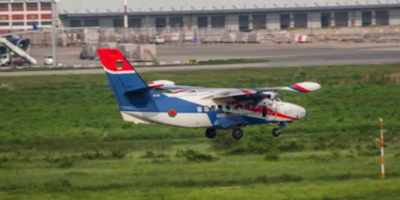In the fast-paced world of aviation, the twin pillars of efficiency and safety are paramount. Airlines, cargo carriers, and private operators constantly strive to optimize their operations while ensuring the highest standards of safety for passengers and crew.
Achieving this delicate balance requires a multifaceted approach, embracing technological advancements, rigorous training, and a proactive safety culture.
This article provides key tips to elevate both the efficiency and safety of your aviation operations, paving the way for smoother flights and enhanced reliability.
1. Embracing Advanced Data Analytics
The modern aviation landscape generates vast amounts of data, from flight performance metrics to maintenance records and air traffic control interactions. Leveraging advanced data analytics can unlock invaluable insights.
By meticulously analyzing this data, operators can identify trends, predict potential issues before they escalate, optimize flight paths for fuel efficiency, and pinpoint areas for procedural improvements.
This data-driven approach allows for proactive decision-making, leading to significant gains in both operational efficiency and safety.
2. Continuous Crew Training and Development
Human factors remain a critical element in aviation safety. Investing in continuous and realistic training programs for pilots, cabin crew, and ground personnel is essential.
Beyond initial certifications, recurrent training should incorporate scenario-based simulations, error management techniques, and crew resource management (CRM) principles.
Emphasis on non-technical skills like communication, leadership, and decision-making under pressure can significantly enhance crew performance and reduce the likelihood of incidents.
3. Smart Aircraft Servicing for Optimal Performance
Maintaining an aircraft is a complex undertaking, where precision and foresight are key. Smart aircraft servicing goes beyond routine checks, integrating predictive maintenance technologies to anticipate component failures before they occur.
Utilizing sensors and data from in-flight operations, maintenance teams can schedule interventions precisely when needed, reducing unscheduled downtime and ensuring components operate at peak efficiency.
This proactive approach to aircraft servicing not only enhances safety by preventing malfunctions but also improves operational efficiency by minimizing disruptions and extending asset lifespan.
4. Harnessing the Power of Aviation Satellite Communication Systems
In an increasingly connected world, reliable communication across vast distances is vital for aviation. The integration of advanced aviation satellite communication systems offers unparalleled connectivity for voice, data, and video.
These systems enable real-time information exchange between aircraft and ground control, facilitating dynamic weather updates, streamlined air traffic management, and enhanced situational awareness.
A robust aviation satellite communication system is crucial for safety, allowing for immediate response to unforeseen circumstances, and for efficiency, by optimizing routing and reducing delays.
5. Cultivating a Strong Safety Culture
Safety in aviation is not merely a set of rules; it’s a deeply ingrained culture that permeates every level of an organization. Fostering an environment where every employee feels empowered to report concerns, suggest improvements, and learn from mistakes without fear of punitive action is paramount.
Regular safety briefings, anonymous reporting systems, and a commitment from leadership to prioritize safety above all else contribute to a robust safety culture that proactively identifies and mitigates risks.
6. Investing in Modern Infrastructure and Technology
The ground infrastructure supporting aviation operations plays a crucial role in overall efficiency and safety. Modernizing air traffic control systems, upgrading runway lighting, and implementing advanced navigation aids can significantly reduce delays and improve safety margins.
Similarly, investing in cutting-edge aircraft technology, such as advanced avionics and automation systems, can enhance pilot situational awareness, reduce workload, and provide additional layers of safety. Continuous technological upgrades ensure operations remain at the forefront of aviation excellence.

